Despite pulling in trillions of views per month, the world of social video has lived without an audience ratings standard for too long.
Fortunately, that’s changed thanks to Tubular Audience Ratings™.
This new set of TV-style metrics helps you understand your audience’s time spent viewing and de-duplicated engagement across YouTube and Facebook.
These cross-platform, standardized metrics finally allow you to compare digital video apples-to-apples with traditional media. For example, amongst other metrics, you can now understand:
- Total watch time
- Unique viewers
- Average watch time per unique viewer
- 30-second views
- De-duplicated reach
- Audience demographics
These will give you a more comprehensive, global picture of your true audience reach and engagement for social video.
Check out the examples below of some of these powerful new ratings.
Comparing Late Night Hosts’ Unique Social Reach to TV
Out of all the late night shows and hosts, Nielsen claims The Late Night Show with Stephen Colbert earned the most viewership on linear TV with an average of 3.6M viewers across its 2019-2020 season. But did Colbert win on social video, too?
As it turns out, Jimmy Fallon (Nielsen’s 2nd-place winner for live TV viewership at an average of 2M viewers) was actually #1 for unique U.S. viewers across both YouTube and Facebook!
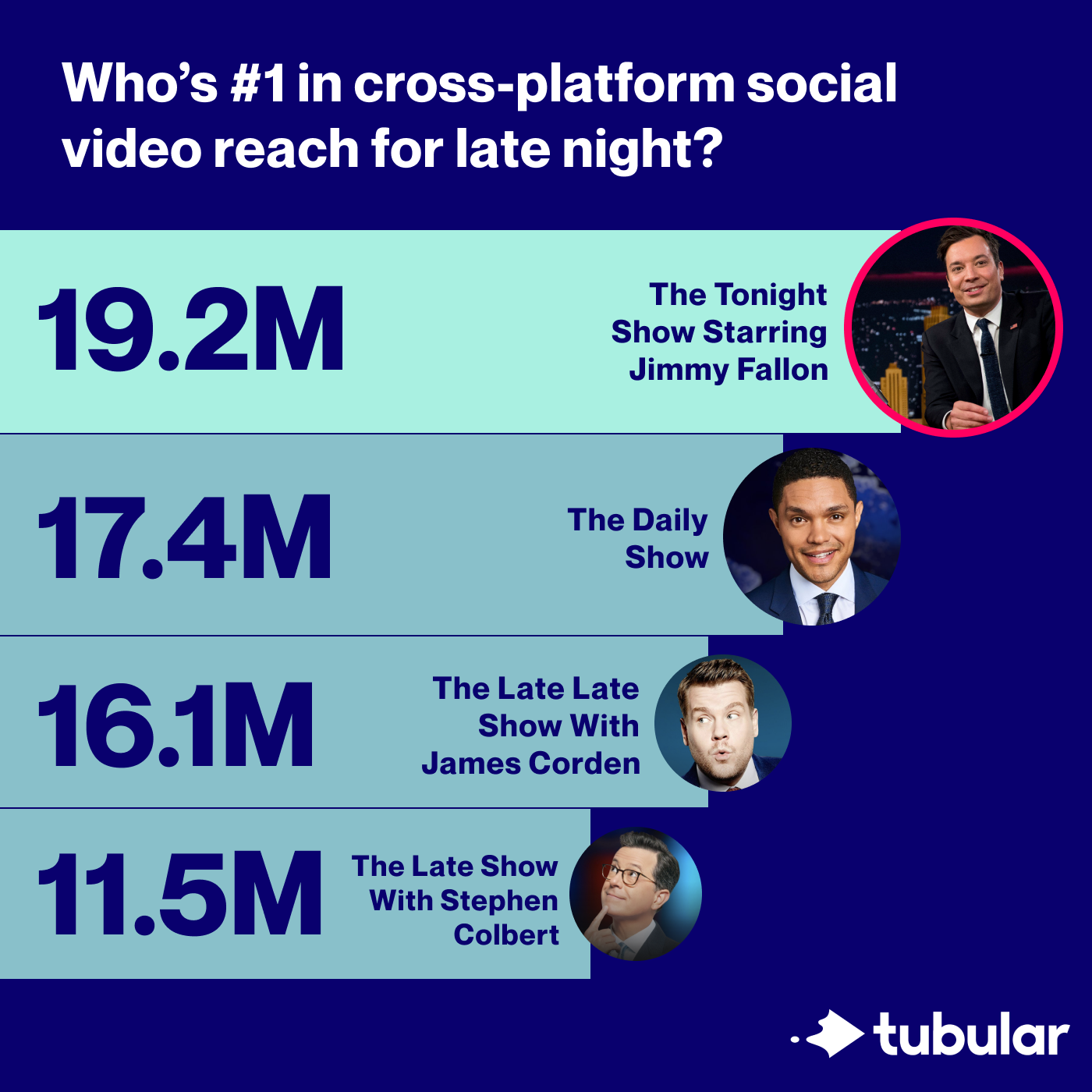
Across selected late night hosts, Jimmy Fallon’s YouTube and Facebook reach hit a total of 19.2M unique viewers in August 2020 alone, nearly 2M more than runner-up Trevor Noah. Colbert’s social reach was fourth at 11.5M uniques, roughly 4.5M behind third place winner James Corden.
Takeaway: Your show may be winning in traditional entertainment media, but as social video catches up, you can see where your audiences are truly spending their time. Adjust your digital strategy to capture more of this attention.
Comparing De-Duplicated Audiences by Platform
Speaking of late night hosts, let’s break down James Corden’s audiences by platform. While Tubular Audience Ratings gives you a larger picture of your audience across both YouTube and Facebook, they are not one and the same.
For example, in August 2020, Corden boasted 26.3M uniques on YouTube and 13.7M uniques on Facebook. Across these uniques, there was a small overlap of 1.8M viewers.
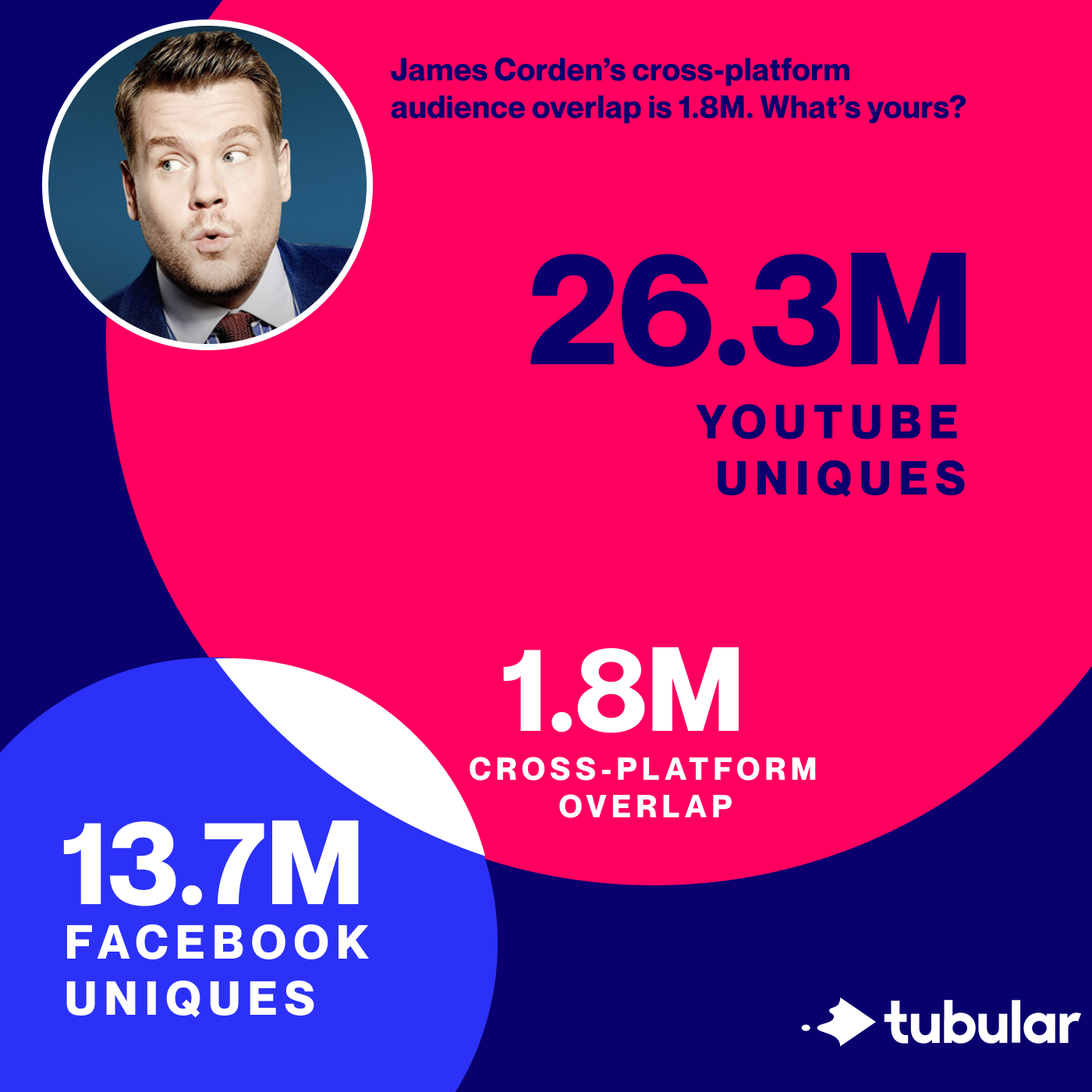
Deduplicating Corden’s audiences shows his cross-platform unique reach is potentially smaller than expected, and that he has a much larger audience on YouTube.
Takeaway: When you know your true de-duplicated unique reach across platforms, you can know how to program separately for each. You can also grow your cross-platform reach bigger than your competitors’ and win larger pitches based on your unique reach.
Comparing Cross-Platform Unique Reach Through Audience Ratings
Another benefit to de-duplicating audiences across YouTube and Facebook is you’re able to see how your total cross-platform unique reach compares to your subscribers and likes.
Let’s look at Got Talent Global as an example. As of August, the TV entertainment show had 14.8M YouTube subscribers and 10.9M Facebook page likes. Now compare that to Got Talent Global’s whopping 72M cross-platform unique viewers, which is 3x higher than its subscribers and likes combined!
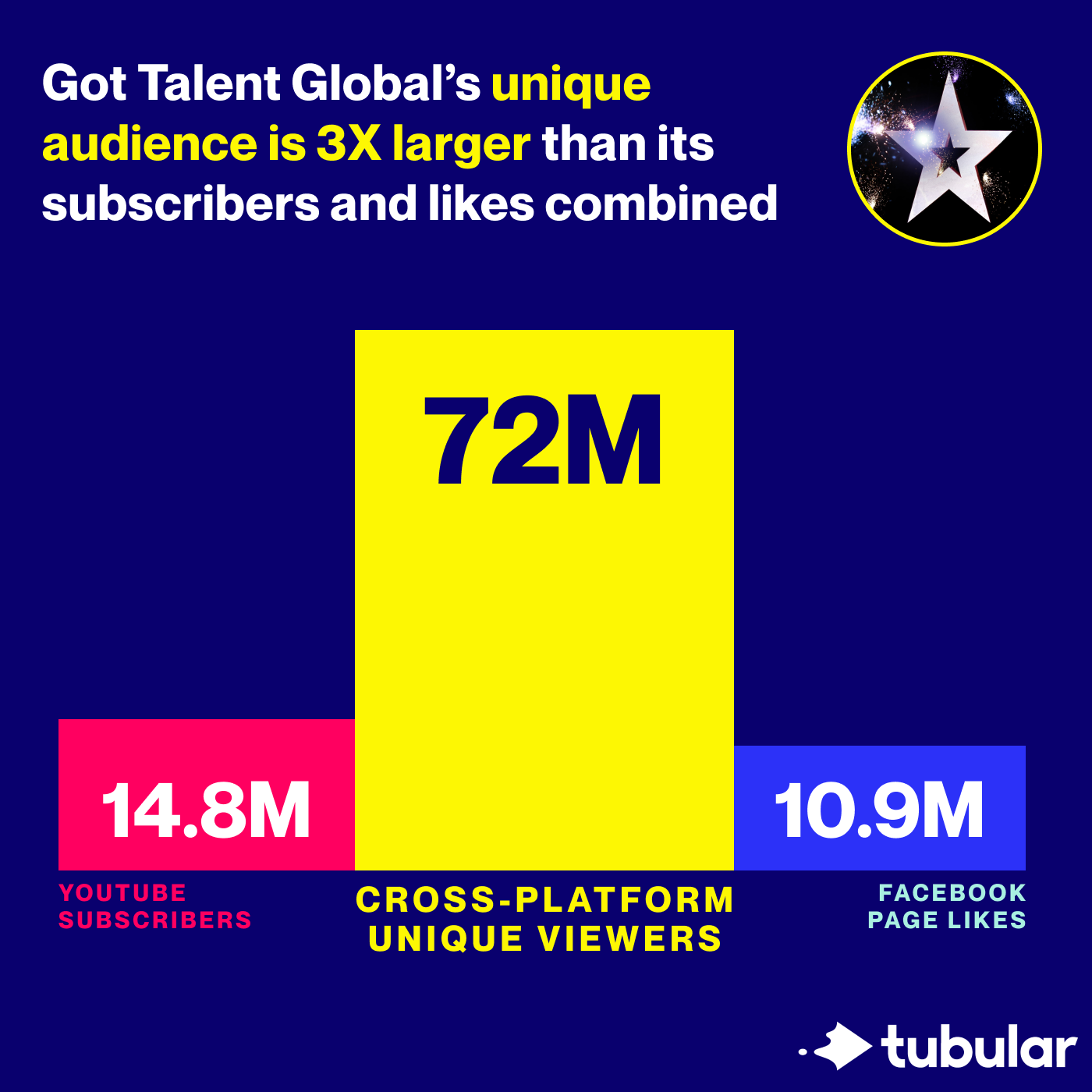
Clearly, subscribers and likes don’t provide a full picture of how audiences interact with digital video content. Your properties could actually be much larger (and much more valuable to advertisers) than you thought.
Takeaway: Use your cross-platform unique reach to prove your actual, larger value and impact to advertisers and win more deals.
Comparing Audience Demographics
Broadcast entertainment companies generate billions of views on their social video content per year. But what if you could say your TV show was in the top five for a specific demographic across YouTube and Facebook?
For example, Comedy Central was #1 for unique cross-platform U.S. male viewers aged 18-34 in August 2020 across American TV broadcasters. As for female audiences, they preferred spending their time with Ellen DeGeneres, which was #1 for unique cross-platform U.S. female millennials in August.
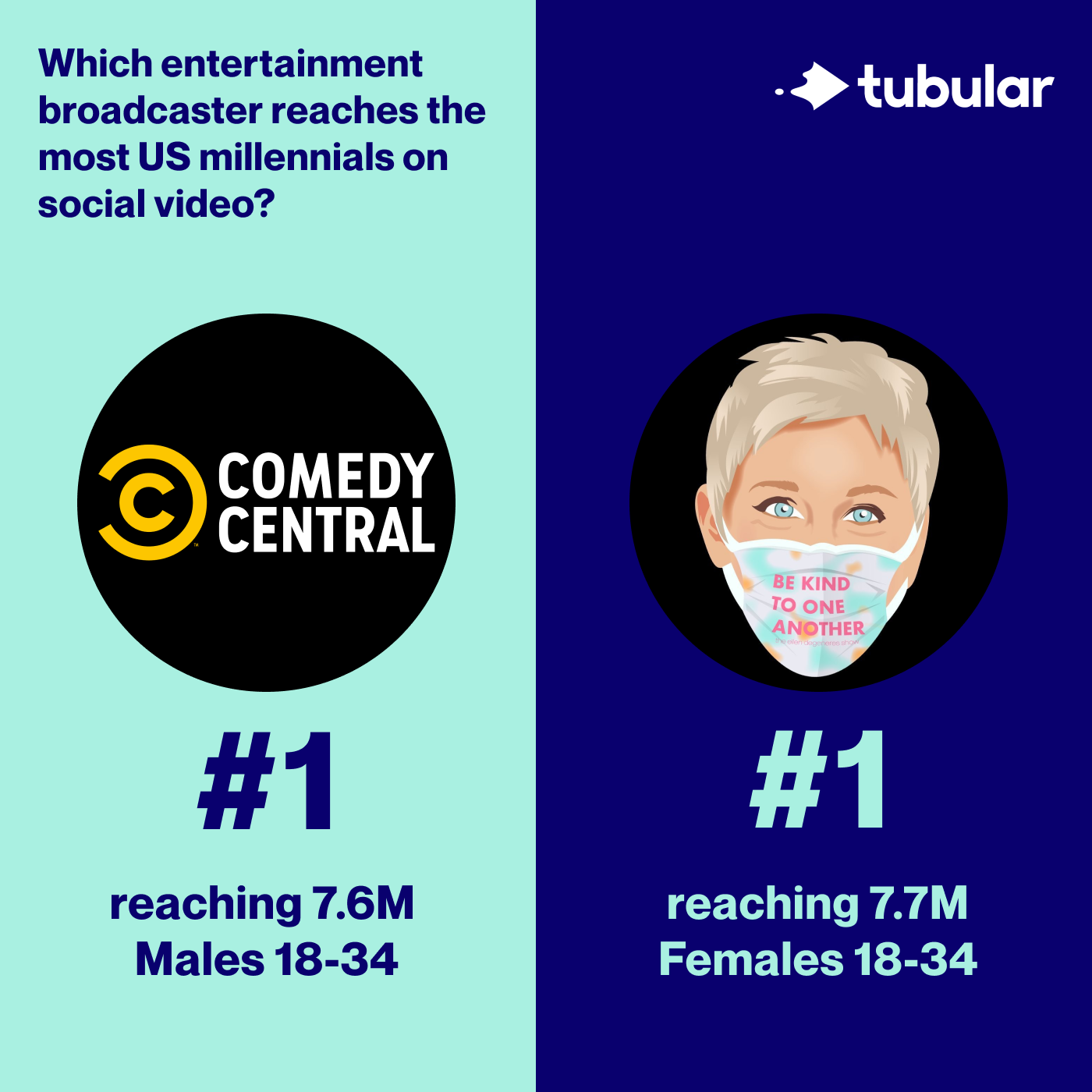
Audience differentiators play a big role in showing you a new, more accurate picture of which of your properties and TV shows are actually the most popular across different demographics.
Takeaway: Knowing this type of audience information, you can move forward with selling media against your #1 content, as well as developing new shows with similar formats and content that would appeal to your top demographics.
Comparing TV Shows by Minutes Watched
Finally, let’s look at the value of minutes watched. With Tubular Audience Ratings, you can measure content by total minutes watched or by unique 30-second views, but for this example, we’ll stick with the former.
We pitted two well-loved reality TV shows against each other: Keeping Up with the Kardashians and The Real Housewives of Beverly Hills. In August 2020 alone, Kardashians saw 38.9M cross-platform minutes watched, while Housewives earned just 0.7M cross-platform minutes.
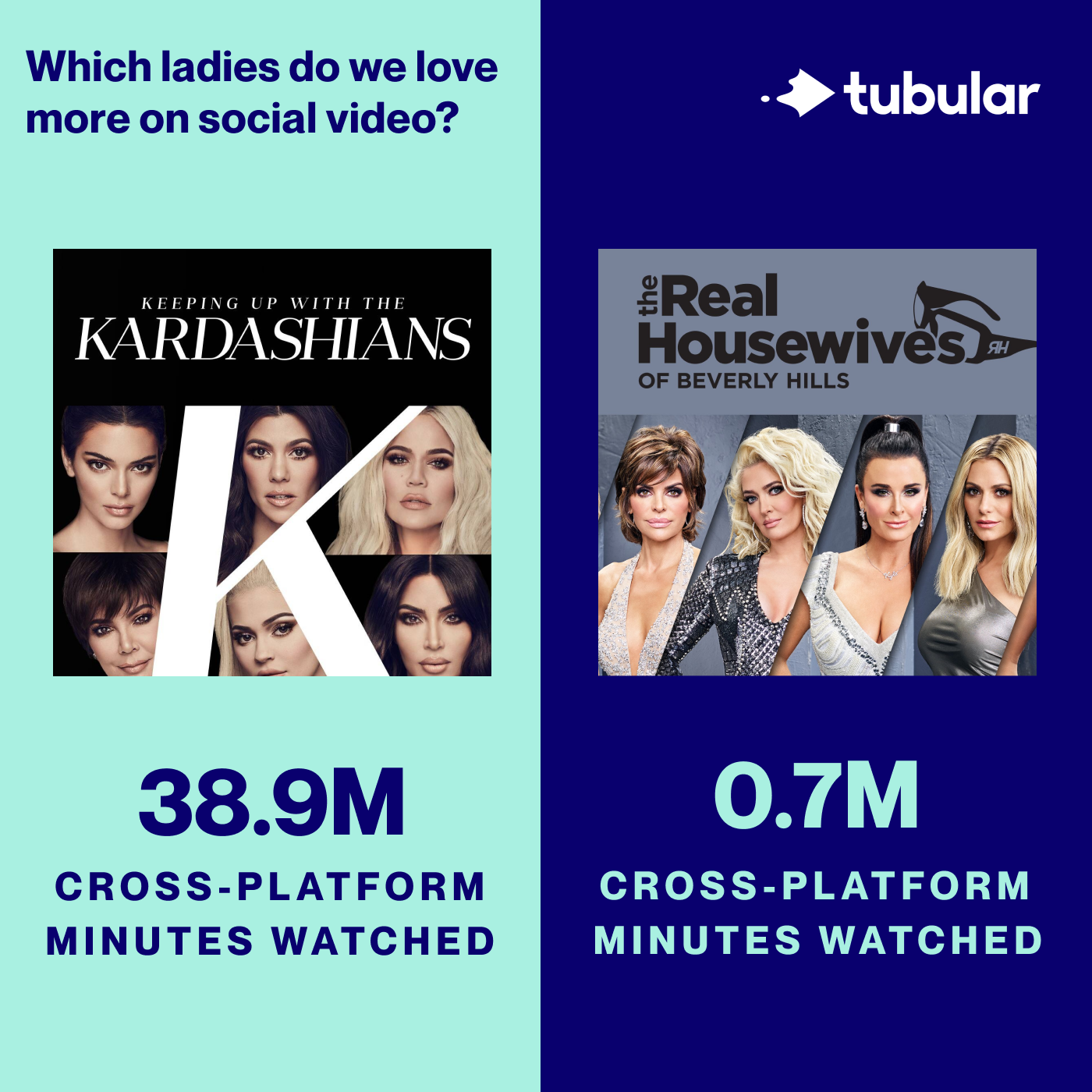
While publications often pick Kardashians and Housewives as some of the top reality shows of all time, the real winner — on social, at least — is the Kardashian family. They’re simply unmatched based on minutes watched.
Takeaway: Unlock bigger budgets and advertising potential by knowing the true social engagement and reach of your properties based on minutes watched, not just on subscribers, likes, or even views.
Curious to see what else Tubular Audience Ratings can do for you?